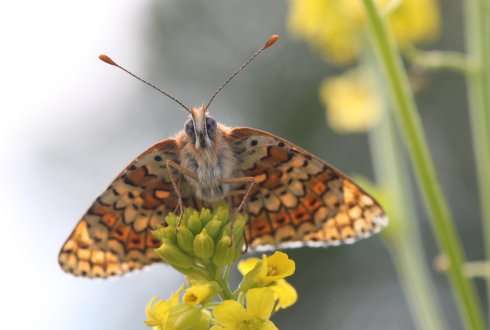Butterflies illustrate the effects of environmental change

Changes in butterfly fauna are yielding surprising insights into our changing environment. The effects of nitrogen from fertilizer or precipitation on the food plants and microclimate of caterpillars have a significant impact on butterfly communities in Northwestern Europe. This according to research by Wageningen entomologist Michiel Wallis de Vries published in the latest edition of Basic and Applied Ecology.
Changes in land use, climate and nitrogen deposition are considered as the main driving forces behind the quality of our natural environment. We can determine how these forces influence different species by examining the ecological traits of these species. "We seldom get past the circular argument that specialists are facing increasing pressure and generalists are becoming increasingly common," says Michiel Wallis de Vries, special professor of Insect Ecology and Conservation at Wageningen University. "We recently made a breakthrough beyond that circular reasoning with an extensive analysis of the characteristics of butterflies in Northwestern Europe, which has led to surprising insights."
Nitrogen
After researching the traits of European butterflies, Wallis de Vries concluded that those characteristics should be viewed in different dimensions. Food availability is of vital importance, with nitrogen playing a key role in animal and plant growth and therefore also in the microclimatic conditions for caterpillars and butterflies. Nitrogen used to be scarce, which prompted most butterfly species to adapt to a less productive environment that showed low rates of change. Dispersal is not as important in a stable environment. This, however, has started to change: agriculture, traffic and industry have increased nitrogen levels in many parts of the world. This is reflected in the butterfly species community, says Wallis de Vries.
The rapidly growing mobile species that live in nitrogen-rich environments are now on the rise and starting to spread to larger areas. This is making it harder for slow-growing butterfly species from nutrient-poor environments. Not only is their habitat disappearing, their lack of mobility is making it increasingly difficult to find a suitable environment elsewhere.
The insights from this study can be used to more effectively link biodiversity indicators to environmental and landscape changes, says Wallis de Vries.
More information: WallisDeVries MF (2014) "Linking species assemblages to environmental change: Moving beyond the specialist-generalist dichotomy." Basic and Applied Ecology 15:279-287. DOI: 10.1016/j.baae.2014.05.001
Provided by Wageningen University


















